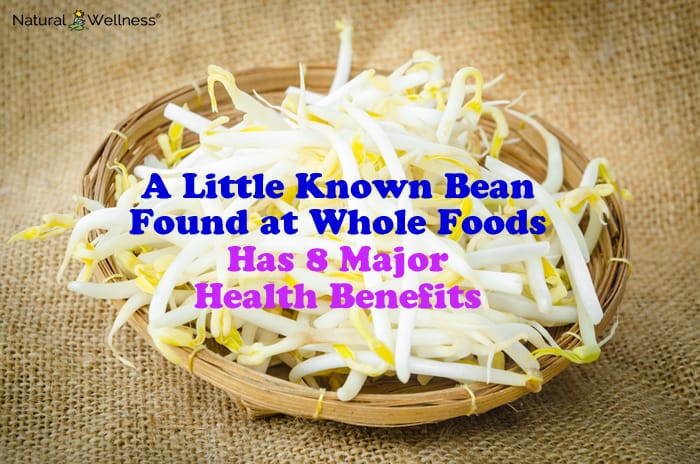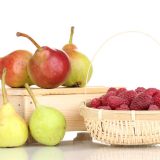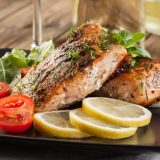

Technically, mung beans are a kind of pulse, meaning they are edible seeds of the legume plant family (1). And now you can find it at your local Whole Foods.
The Origins of Mung Beans
Mung beans are believed to hail from the Indian subcontinent in southernmost regions of Asia and were domesticated as early as 1500 BC before slowly being introduced to the rest of Asia and the greater world (1).
Mung soup is a staple of Chinese cuisine, and if you’ve ever had the deliciously rich Indian dish, Dahl, you’ve definitely eaten mung beans.
Most mung beans are consumed sprouted, but they can also be ground into a powder and used in the kitchen and bathroom. More on that later!
Sprouting mung beans is the most common first step in preparing the bean for consumption, and acts as the natural germination process by which the mung bean grows a stalk or shoot with new buds. Sprouted mung beans are far more nutritional than the un-sprouted seeds or beans themselves, containing a swath of nutrients, essential amino acids, and antioxidants while being relatively low in calories per serving (3).
Mung’s The Word
In a critical review published by Science Direct in March 2018, researchers found that “mung beans are playing a greater role in radical scavenging activities, detoxification, and also exhibits chemo-preventive effects.” Quite high praise.
From big nutritional value to being potentially cancer preventative, try grabbing some mung beans next time you’re at Whole Foods for these 8 major reasons.
- Mighty Protein – Our bodies need protein to repair damaged cells and build new ones, and mung beans are a rich source of protein. In one cup (202 grams) of boiled mung beans, there are 14 grams of protein (2). Leading nutritionists and research advocate 25 – 30 grams of protein per day for healthy adults. Good thing 20%–25% of the total dry weight of mung beans is protein. Specifically, globulin (60%) and albumin (25%) (3). Because of their high protein content, mung beans are perfect for vegans, vegetarians or people living in areas where fresh proteins derived from meats aren’t available.
- Antioxidant Properties – Mung beans contain many macro and micronutrients including a host of antioxidants. Following germination, micronutrients like phenolics, flavonoids, and vitamin C all see an increase in levels. The primary antioxidants in mung beans are the flavonoid pair vitexin and isovitexin, which are believed to contribute to much of the reported anti-inflammatory properties associated with mung beans (5). It’s these antioxidant properties that contribute to the belief that mung beans can help prevent against cancer growth and free radicals that can damage your body.
- Anti-diabetic Effects – Diabetes is a broad group of diseases all characterized by high blood glucose levels. Numerous animal trials have reported mung beans’ ability to lower blood sugar levels in hyperglycemic mice and also was found to possess potent anti-diabetic effects. Incorporating mung beans into your diet could help manage hypoglycemia and potentially prevent against complications arising from diabetes like heart attack and stroke (3). The beans’ anti-diabetic properties may also be a food well suited in the management of hypertension and obesity as well (3).
- More Mung, More Fiber – Plant-based roughage, otherwise known as dietary fiber, is technically indigestible by the human body, but very necessary for helping clean the insides of our colons as it passes through. According to findings published in the International Food Research Journal in October 2017, “mung bean had the greatest amount of IDF (insoluble dietary fiber) and TDF (total dietary fiber) whereas chickpea had the lowest.” Insoluble fiber not only cleans your colon and prevents colon cancer, it also promotes healthy digestion. Researchers were looking at kidney bean, mung bean, chickpeas among a wide field of other legumes (7).
- Beautiful Mung – Being antioxidant-rich and anti-inflammatory, it’s no surprise that mung beans can help relieve acne, exfoliate skin, and even wash hair. When ground into a fine powder, mung beans can be used as soaps and exfoliants. You can then combine the powder with different ingredients such as water, honey, or avocado depending on what consistency you’re going for.
FACE MASK RECIPE: One simple face mask recipe combines a tablespoon of mung bean powder, a tablespoon of yogurt and a pinch of turmeric. Turmeric acts as a natural antibacterial and anti-inflammatory agent on the skin while the yogurt soothes and allows for easy application as a face mask (4). You can get creative with ingredients depending on the desired effect, but just remember that a little bit goes a long way. The copper in mung beans has also been said to help smooth wrinkles and offer anti-aging benefits. - Culinary Versatility – Some may know mung bean soup as a traditional Chinese dish, or perhaps the aforementioned Dahl in Indian cuisine, but it can easily be a healthy addition to many meals and culinary styles. Add it easily to soups, stir-fry’s or curries. Based on their slow digestibility and release of carbohydrates, mung beans are considered a low glycemic index food and are generally hearty and thick in texture if not overcooked (3).
- Heat Stroke Prevention – According to experts, vitexin and isovitexin are the major antioxidant components in mung beans with over 96% of the antioxidants existing in the bean seed coat (5). It’s these antioxidants which are believed have been shown to reduce the incidence of heat stroke, leading some to believe that the Chinese were onto some serious health benefits aside from filling stomachs with mung bean soup.
- More Vitamins and Nutrients – From a nutritional standpoint, mung beans are full of manganese, potassium, magnesium, copper, zinc, vitamin C and various B vitamins (6). They’re also full of essential amino acids like phenylalanine, leucine, isoleucine, valine, lysine, and arginine (6).
Conclusion
The “Modest Mung.” It’s delicious, filling, high in protein and relatively inexpensive. As far as we can see, the only downside may be some flatulence.
But as always, be sure to consult your physician before altering your diet in any significant way, and be sure you aren’t allergic to mung beans or any of the other ingredients suggested in this article.




